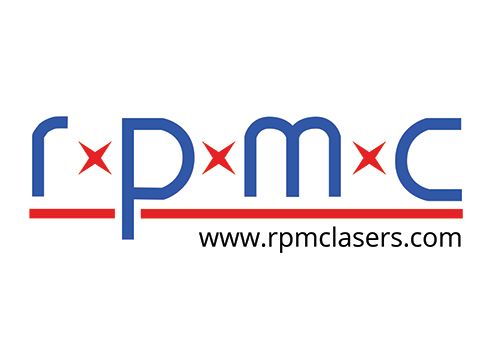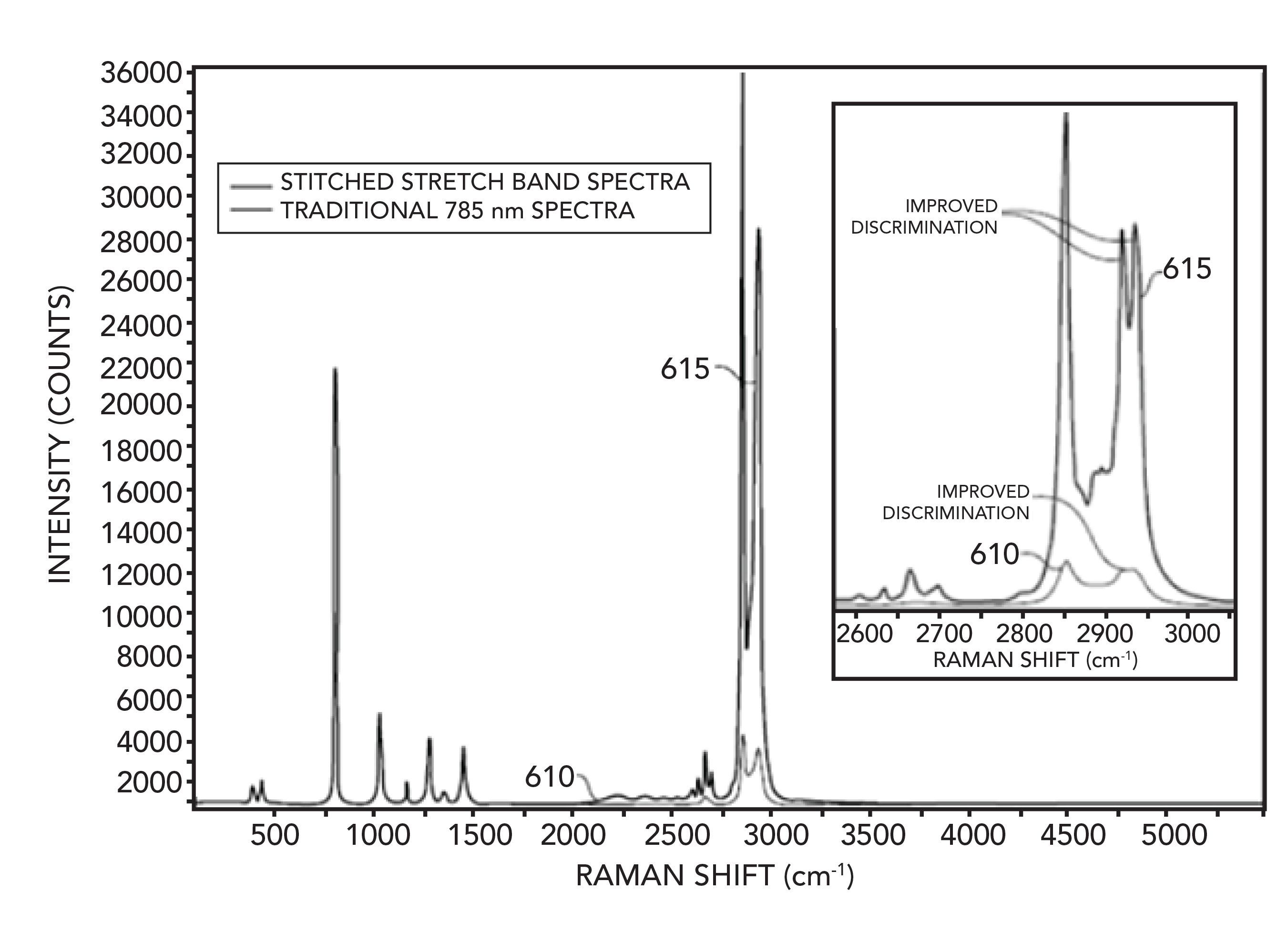How Does Concatenation Enhance Raman Spectroscopy?

In general, many Raman measurements suffer from fluorescence, which forces the use of longer excitation wavelength (lower photon energy) lasers to prevent the fluorescence signal from overwhelming the Raman signal. However, this results in reduced sensitivity of low-cost silicon CCD detectors at higher wavenumbers, making it difficult (or impossible) to observe the “stretch” portion of the Raman spectra (for example, 2000–4000 cm-1). This reduced sensitivity is particularly true for excitation wavelengths greater than 760 nm. In addition, longer wavelength excitation lasers result in a reduced Raman excitation cross-section, making it challenging to observe and perform quantitative analysis in the “fingerprint” portion of the Raman spectra (for example, 0–2000 cm-1). Raman concatenation overcomes these difficulties and allows a user to visualize the entire Raman spectra from 0 to 4000 cm-1 by using two lasers with a single-grating-spectrometer and a single probe. As an added benefit, because a shorter wavelength (higher photon energy) laser is used to collect the “stretch” portion of the spectrum, an enhanced signal is observed in this region, which allows for greater quantitative accuracy.
The second shorter wavelength laser is selected to probe the “stretch” region of the spectrum using the same spectrometer detection wavelengths. In this example, a 680 nm excitation laser corresponds to a 2000–4000 cm-1 Raman shift. The probe filters are selected to allow excitation and collection at both wavelengths.
In operation, each portion of the Raman spectrum is sequentially collected, then the composite spectrum is “concatenated” or stitched together. Figure 1 shows an example of a concatenated spectrum collected on cyclohexane using a 680 nm/785 nm laser pair. Note the significant enhancement and improved peak discrimination of the Raman signal strength in the stretch portion of the spectrum.
Figure 1: Concatenated Raman spectra for cyclohexane obtained with a 680 nm/785 nm laser pair.

The ~10X enhanced signal and signal-to-noise ratio in the stretch region of the spectrum (Figure 1, right side) makes Raman concatenation ideal for quantitative process control of CH, OH, and NH molecules in many applications. Finally, it should be noted that longer wavelength laser pairs can also be selected if fluorescence is still an issue at 680/785 nm. For example, a 735/830 nm laser pair can be utilized with a silicon-based spectrometer, while an 830/1064 nm laser pair can be used with an InGaAs-based spectrometer. The Raman concatenation system is patented by Innovative Photonic Solutions (IPS) under US 10,359,313 and is patent pending in the EU.
The R series of wavelength-stabilized, single-mode and multimode laser diodes offer a narrow wavelength spectrum in wavelengths from 633 nm to 1064 nm. Package options range from components as basic as a TO-56 or 14-pin BF packaged diodes, to OEM modules including electronics, to UL/CE and IEC certified turnkey systems.
RPMC Lasers, Inc.
8495 Veterans Memorial Pkwy, O’Fallon, MO 63368
tel. (636) 272-7227
Website: www.rpmclasers.com

New Study Reveals Insights into Phenol’s Behavior in Ice
April 16th 2025A new study published in Spectrochimica Acta Part A by Dominik Heger and colleagues at Masaryk University reveals that phenol's photophysical properties change significantly when frozen, potentially enabling its breakdown by sunlight in icy environments.
Advanced Raman Spectroscopy Method Boosts Precision in Drug Component Detection
April 7th 2025Researchers in China have developed a rapid, non-destructive Raman spectroscopy method that accurately detects active components in complex drug formulations by combining advanced algorithms to eliminate noise and fluorescence interference.